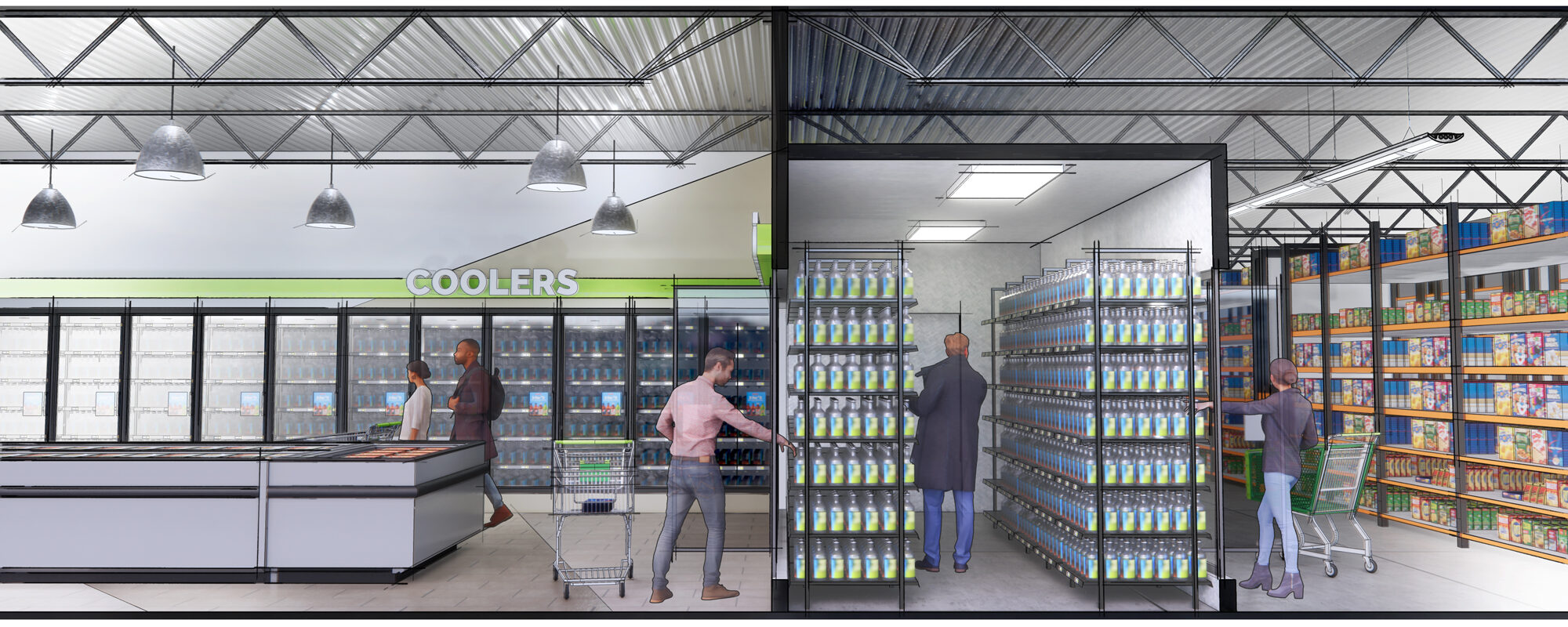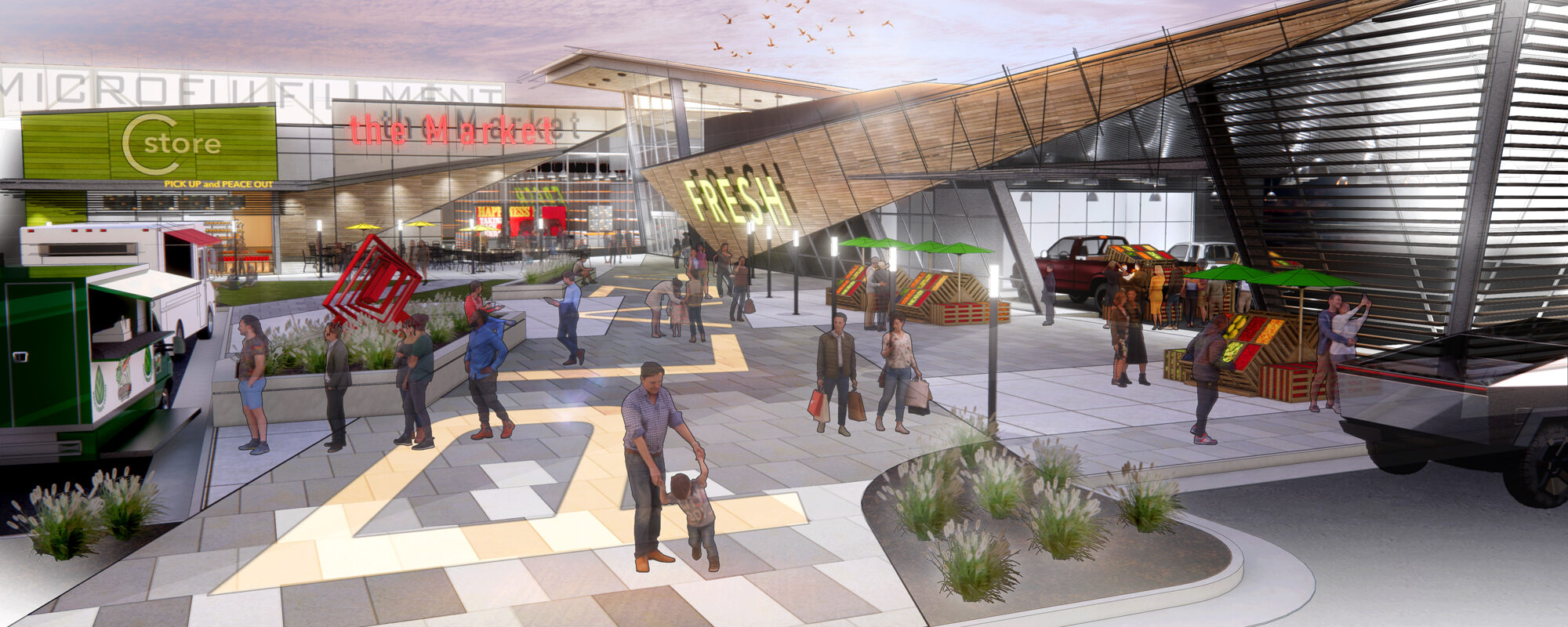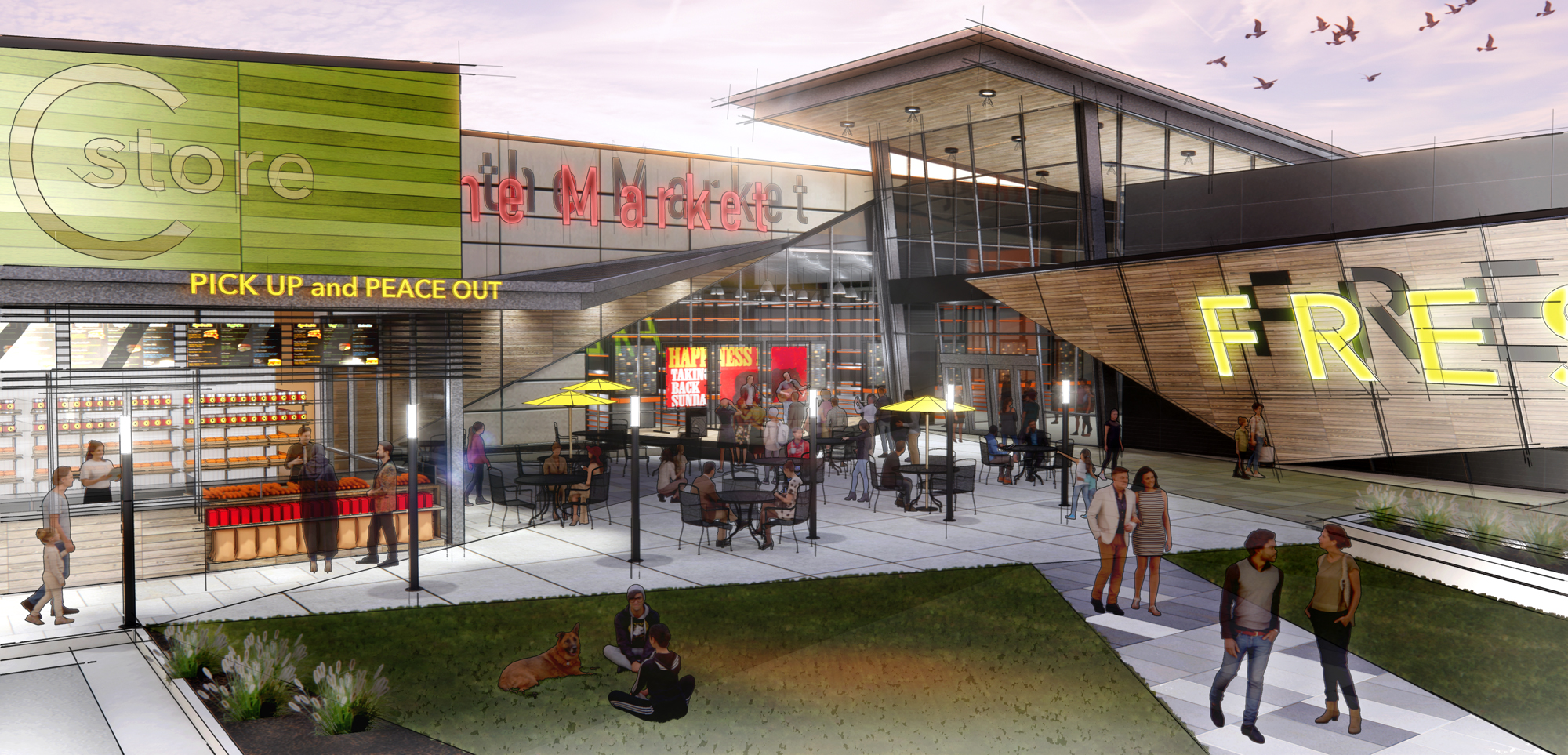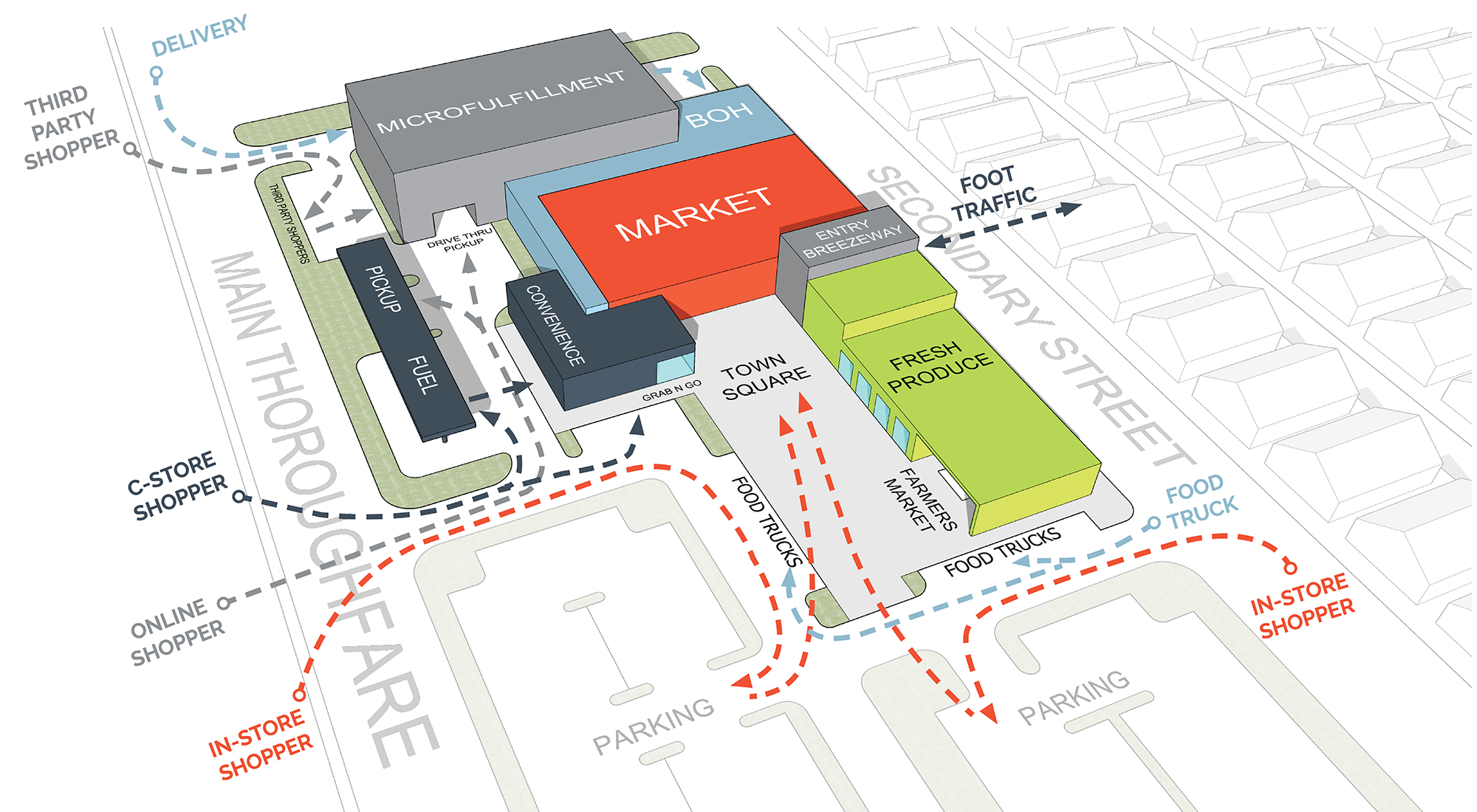Whether you shop frequently or stockpile, prefer to shop in-store or order everything online, everyone needs to buy groceries. This year’s events significantly changed how many people get their groceries, and it’s no surprise that individuals are looking for safe ways to interact with others while going about their essential activities. Our food retail design team works with many different clients seeking additional ways to engage shoppers across the entire store. Through these experiences, we’ve observed a number of key opportunities.

Opportunity 1: Create dual-purpose shopping zones
The ever-growing online shopping experience could drive more center-store items into a micro-fulfillment arena and create dual-purpose shopping zones for various types of shoppers, including 3rd party shoppers (ie: Instacart, Shipt, etc.). Traditional in-store customers could access products from the market side, which would allow 3rd party-pickers to shop from the micro-fulfillment side where customer experience comes second to speed and efficiency. For example, a typical dairy cooler is a space that could be transformed into a dual-purpose zone, as it is already accessible from both sides of the sales floor dividing wall. Opening it up to be shopped from both sides avoids duplication of labor.
Creating a smaller sales floor which focuses on fresh, high-margin items emulates a community market atmosphere where customers can spend more time shopping for fresh, local items and discover new products and experiences along the way.

Opportunity 2: Optimizing the exterior site
With the evolution of the interior sales floor, there are more opportunities than ever to optimize the use of space across the exterior facades and across the overall grocery store site. The increased adaptation of ‘Buy Online Pickup in Store (BOPIS)’ means that more shoppers are accustomed to getting their groceries without leaving their car. For some, this has more appeal than simply assuaging health concerns and will likely become a long-term shopping habit. However, if the store maximizes the space around the site, it could recapture impulse sales that may have been lost because the customer is not entering the store. Consider creating areas where shoppers can drive up (or through) to pick up those last-minute items or even to treat themselves to an iced latte for making it out of the house.
There is also more opportunity for outdoor seating and gathering spaces which have become invaluable to the customer experience in 2020. Opening up space to local food trucks not only brings in outside revenue for the store in the form of rent, but also drives interest in diverse cuisine and attracts shoppers seeking a local, or destination, experience. Additionally, maximizing the use of exterior walls/spaces to communicate the multi-use services offered by the reinvented grocery store will promote additional opportunity to capture sales and engage the local community.

Opportunity 3: Increased automation
How do we connect it all together to create a food-centric experience that caters to a wide diversity of lifestyles? We believe that automation, and staff that is trained to use it, will be paramount to the future of grocery stores. For example, the utilization of digital shelf labels can be merged with the data collected from shopper habits to create a digital concierge service that recommends product pairings after the first selection is made. The virtual-center store (see our previous article “Is Center Store Dead? Thoughts on Reviving the Grocery Store Layout”) allows the store to extend the available SKU’s and allow customers to discover products they may have walked right by if not for the concierge’s suggestion. When a customer adds the suggested product to their virtual cart, those products are compiled into their order in the micro-fulfillment center and available to be loaded into the customer’s car after they checkout.
With lifestyles and shopping habits continuing to evolve, we understand the desire to gather and integrate food with person-to-person interaction will always be there. Creating a smart and engaging grocery store also creates a place where all the most-human, basic needs (for food and for social interaction) can be met.

About the author:
Katie Beckwith, AIA, graduated from the University of Kansas with a Master of Architecture degree. Since joining BRR in 2016, Katie has worked on a wide array of projects in the retail, grocery and restaurant markets. Part of her unique skill set includes navigating the intricacies of designing for grocery spaces within multi-story and mixed use buildings along with the individual challenges of coordinating all the various disciplines that come with those complex building types. Email her.



